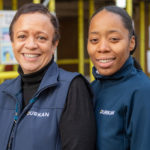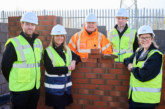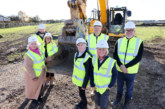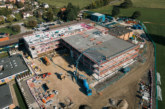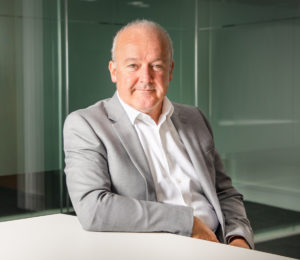 Social value is not a new term but it’s one that we can expect to hear a whole lot more as 2021 unfolds. As part of Women in Construction Week, Kevin O’Connor, Head of Social Value and Inclusion at Durkan, explores the issue and explains how more female representation in public sector construction is a critical piece of the social value jigsaw.
Social value is not a new term but it’s one that we can expect to hear a whole lot more as 2021 unfolds. As part of Women in Construction Week, Kevin O’Connor, Head of Social Value and Inclusion at Durkan, explores the issue and explains how more female representation in public sector construction is a critical piece of the social value jigsaw.
This has been quite a year for social value and we’re barely out of the starting blocks. In January, Government released a Procurement Policy Note (PPN 06/20) introducing a new model to ensure its commercial activities deliver social value. Meanwhile in February, the UK Green Building Council launched its Framework for Defining Social Value in the Built Environment. It’s clear that things are moving up a gear but with such a broad-ranging definition of social value it can be difficult to know how to translate this positive momentum into practical action.
Encouraging better gender balance in the industry seems a good place to start. Government defines social value in many ways — COVID-19 recovery, tackling economic inequality, fighting climate change, and well-being are all included, but it also references equal opportunity, and that, in the face of a global pandemic, is particularly pertinent.
Despite concerted efforts over the last 20 years, women still represent less than 10% of the construction workforce. While many local authorities and their contracting partners have worked hard to promote the opportunities for women within the construction sector, there has perhaps been less consideration of the immediate and longer-term social value this can create.
COVID-19 has arguably hit women the hardest, both in terms of the sectors in which they work and the ways in which they have been forced to juggle home life and career. It’s concerning then that a recent report by The Women and Equalities Committee has highlighted that women are traditionally under-represented in the very sectors that have been singled out for Government investment, such as construction. But with this concern comes an opportunity to use the power of public and private sector collaboration to make a difference and attract a new wave of talent. But how?
Increasing female representation
The traditional approach to increasing female representation in the sector has been for local authority procurement teams and planning departments to stipulate that a certain percentage of the workforce must be women but while the aspiration is admirable, it can present challenges and not always deliver the required result.
As a partner to the public sector, we are looking for local authorities to actively facilitate and enable a longer-term collaborative approach that can attract the right women into the sector, in volume.
Local authorities are uniquely placed to be able to work with their skills and employment teams, and related social enterprises, to identify women that are looking for employment, audit their skills, identify areas of interest and part-fund a relevant qualification. In turn, local authority construction and development partners should be expected to commit to placing a certain number of these individuals on their projects, providing invaluable training and experience.
There are multiple benefits to this approach. For the private sector partner, the process is de-risked, and the trainees come quality assured, meaning they are likely to go the distance and succeed. For the individuals going through training, we make every possible effort to provide employment at the end of their training (and more often than not we do), but at the very least they gain critical on the job experience and are set up to proceed in the sector with confidence and stay in it for the long-haul. And finally, for the local authority, by providing opportunities for those women that are out of work or facing barriers, it supports social mobility and inclusion, reduces unemployment and delivers on the growing expectation for long-term social value — both in respect to COVID-19 recovery and equal opportunity. For all parties there is a further overall benefit — to help a major industry overcome its skills crisis.
Putting the approach into pratice
We have already successfully piloted this approach as part of our work with Southern Housing Group. Together, at one of our joint regeneration projects — Lisgar Terrace in Hammersmith & Fulham, we created an innovative new funding mechanism to provide paid and flexible work experience for women returners at sites across London. Using funds from Lisgar, pay covers childcare and travel, making work experience a viable and affordable option. Four mothers have returned to work as a result — one, for example, has gone on to become an assistant site manager while another is now employed at Southern’s head office.
It is frustrating for us all that in 2021 we are still facing a reality where women are chronically under-represented in this sector. As an industry, we have so much to offer — opportunities for career progression, fantastic earning potential, flexible working and more. So many women, in turn, have so much to offer us — skills that are all too often over-looked because the route into this sector appears too challenging or daunting.
Greater collaboration between public and private sectors can change this. It can show a viable and affordable entry-point, a friendly, supportive route map for a long-term career and ultimately, it can deliver social value in abundance. Now, in the face of this pandemic and as so many look to re-train or seek new opportunities, is the right time to act. Success will breed success, but it requires forward-thinking local authorities and private sector partners to make it happen.
Sonia Allen
Sonia manages Durkan’s team of Resident Liaison Officers, helping them to provide a critical community service during construction works and playing an integral role in ensuring projects stay on programme through booking in properties and managing residents’ expectations. She is currently involved in projects for Southern Housing Group, Peabody and Islington & Shoreditch Housing Association.
“I came to this role by accident after being made redundant from the financial mortgage sector and intended to stay for a few weeks. Ten years later I am still here which is testament to how enjoyable, challenging, and truly awesome it is to work in construction!
“No day or week is the same and I meet a really diverse mix of people — from construction workers to clients, local communities, schools and community groups. Every new project brings challenges and stretches my imagination.
“I love helping my team to learn what they are capable of and grow in their roles and abilities. A friendly ear combined with a willingness to get to know each of their personalities and what makes them tick is key in setting ambitious but achievable goals.
“I would definitely encourage other women to consider construction as a career. There are many different parts of the business to work in and to be within such a diverse and ever-changing community brings out the best in most people.”
 Ann McGivern
Ann McGivern
Ann is a Site Manager at the Ethelburga Estate which Durkan is refurbishing. She has been in the construction sector for 22 years, starting out as a Resident Liaison Officer and developing her career from there.
“I love my role — it’s exciting and challenging and it presents so many opportunities to meet people from different cultures and backgrounds. Of course, it can be challenging at times as a woman in what can still be a male-dominated environment, but I have a good team around me and a brilliant support network.
“The construction industry isn’t just for the men of the world but also for women. It’s a great experience learning different trades. I know I am still learning. You can start at the bottom and work your way up the ladder.
“Having a more diverse mix in any industry creates benefits for everyone and in some cases encourages us all to raise the bar in finding our innermost capabilities. I thrive on challenges and look forward to each new project and what that may bring.”
Header image shows Sonia Allen on the left, who manages Durkan’s team of Resident Liaison Officers, standing next to her colleague Dee Blake, who is a Resident Liaison Officer.

